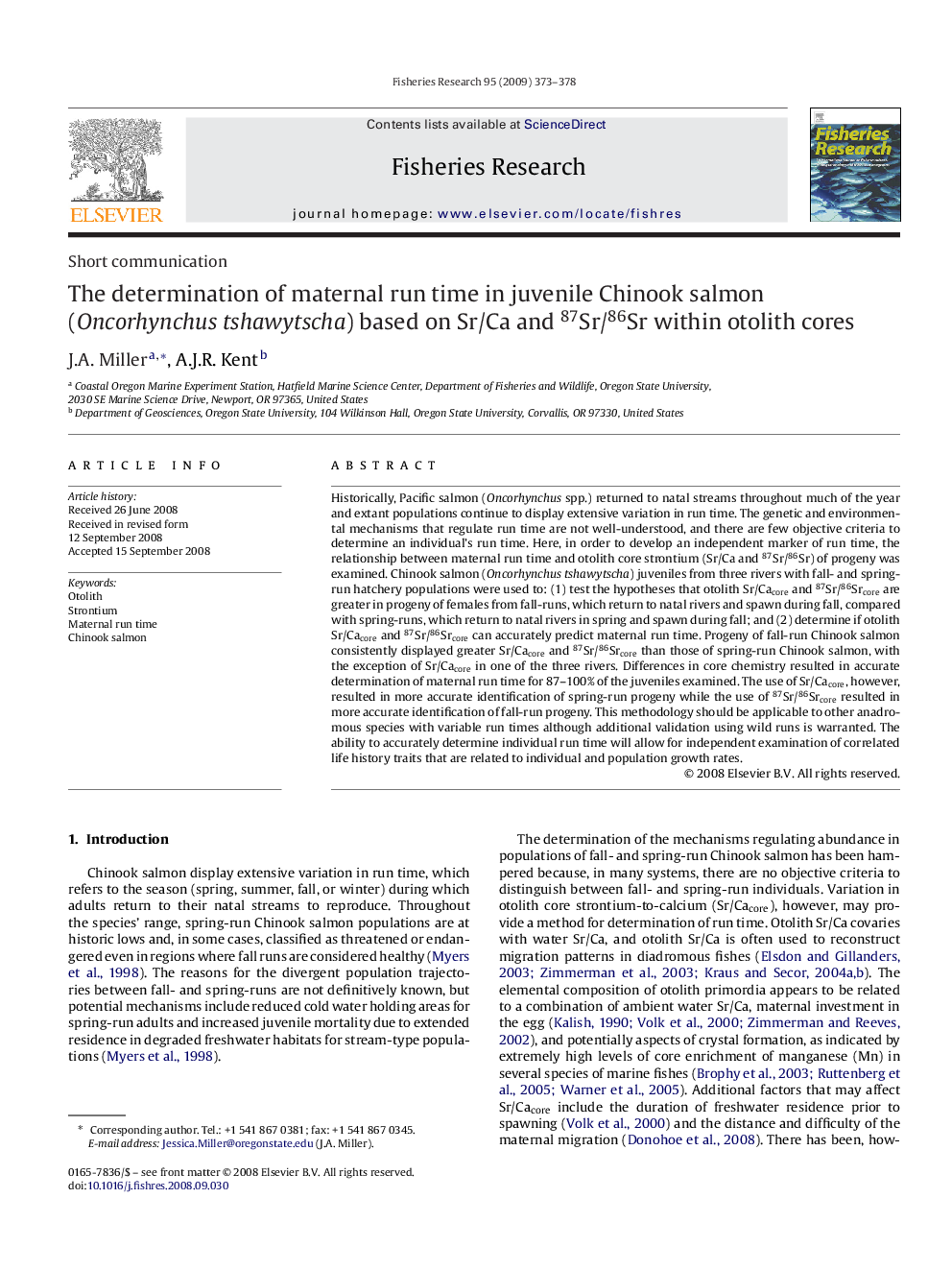| Article ID | Journal | Published Year | Pages | File Type |
|---|---|---|---|---|
| 4544174 | Fisheries Research | 2009 | 6 Pages |
Historically, Pacific salmon (Oncorhynchus spp.) returned to natal streams throughout much of the year and extant populations continue to display extensive variation in run time. The genetic and environmental mechanisms that regulate run time are not well-understood, and there are few objective criteria to determine an individual’s run time. Here, in order to develop an independent marker of run time, the relationship between maternal run time and otolith core strontium (Sr/Ca and 87Sr/86Sr) of progeny was examined. Chinook salmon (Oncorhynchus tshawytscha) juveniles from three rivers with fall- and spring-run hatchery populations were used to: (1) test the hypotheses that otolith Sr/Cacore and 87Sr/86Srcore are greater in progeny of females from fall-runs, which return to natal rivers and spawn during fall, compared with spring-runs, which return to natal rivers in spring and spawn during fall; and (2) determine if otolith Sr/Cacore and 87Sr/86Srcore can accurately predict maternal run time. Progeny of fall-run Chinook salmon consistently displayed greater Sr/Cacore and 87Sr/86Srcore than those of spring-run Chinook salmon, with the exception of Sr/Cacore in one of the three rivers. Differences in core chemistry resulted in accurate determination of maternal run time for 87–100% of the juveniles examined. The use of Sr/Cacore, however, resulted in more accurate identification of spring-run progeny while the use of 87Sr/86Srcore resulted in more accurate identification of fall-run progeny. This methodology should be applicable to other anadromous species with variable run times although additional validation using wild runs is warranted. The ability to accurately determine individual run time will allow for independent examination of correlated life history traits that are related to individual and population growth rates.
